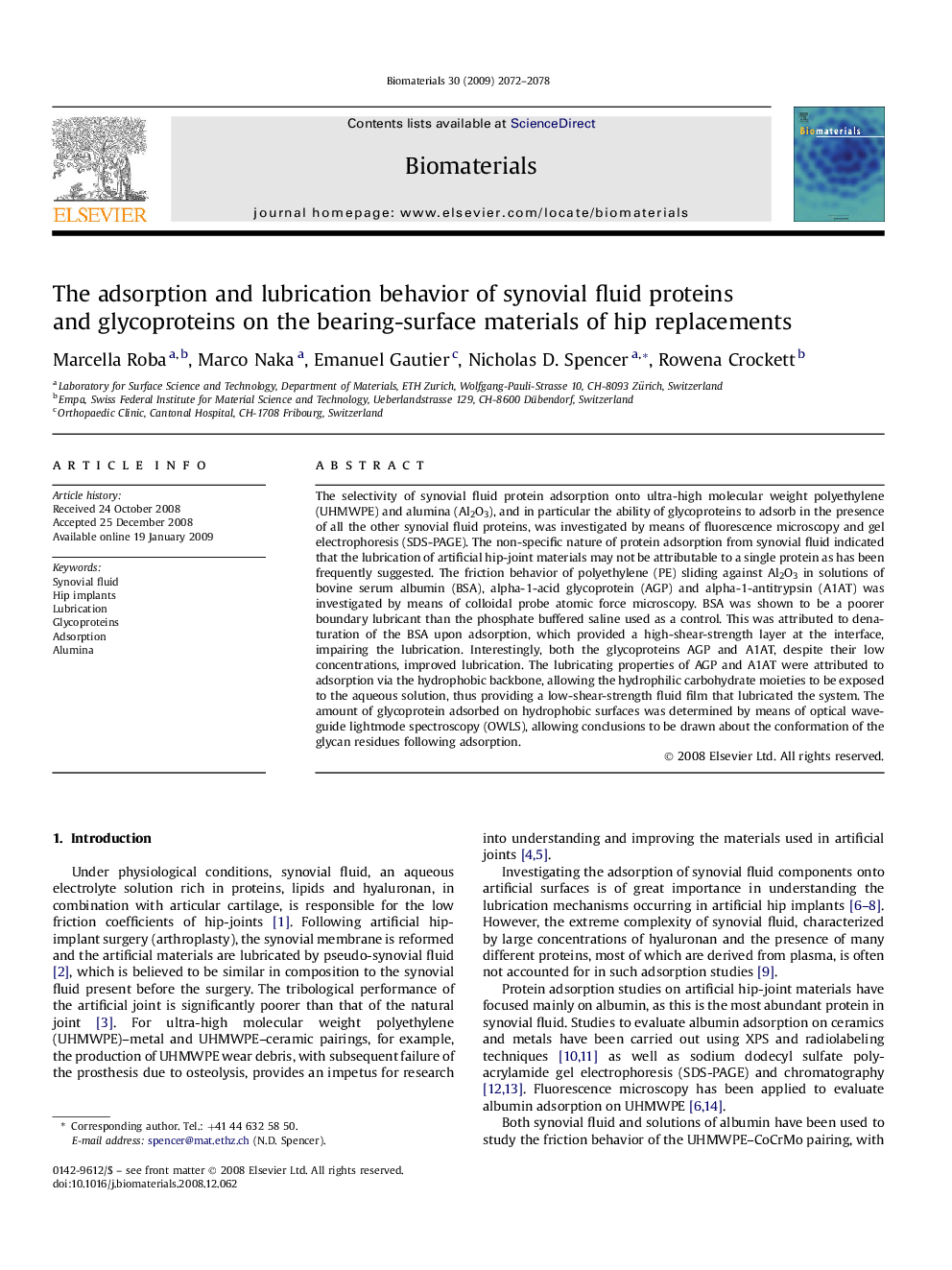| Article ID | Journal | Published Year | Pages | File Type |
|---|---|---|---|---|
| 8972 | Biomaterials | 2009 | 7 Pages |
The selectivity of synovial fluid protein adsorption onto ultra-high molecular weight polyethylene (UHMWPE) and alumina (Al2O3), and in particular the ability of glycoproteins to adsorb in the presence of all the other synovial fluid proteins, was investigated by means of fluorescence microscopy and gel electrophoresis (SDS-PAGE). The non-specific nature of protein adsorption from synovial fluid indicated that the lubrication of artificial hip-joint materials may not be attributable to a single protein as has been frequently suggested. The friction behavior of polyethylene (PE) sliding against Al2O3 in solutions of bovine serum albumin (BSA), alpha-1-acid glycoprotein (AGP) and alpha-1-antitrypsin (A1AT) was investigated by means of colloidal probe atomic force microscopy. BSA was shown to be a poorer boundary lubricant than the phosphate buffered saline used as a control. This was attributed to denaturation of the BSA upon adsorption, which provided a high-shear-strength layer at the interface, impairing the lubrication. Interestingly, both the glycoproteins AGP and A1AT, despite their low concentrations, improved lubrication. The lubricating properties of AGP and A1AT were attributed to adsorption via the hydrophobic backbone, allowing the hydrophilic carbohydrate moieties to be exposed to the aqueous solution, thus providing a low-shear-strength fluid film that lubricated the system. The amount of glycoprotein adsorbed on hydrophobic surfaces was determined by means of optical waveguide lightmode spectroscopy (OWLS), allowing conclusions to be drawn about the conformation of the glycan residues following adsorption.
